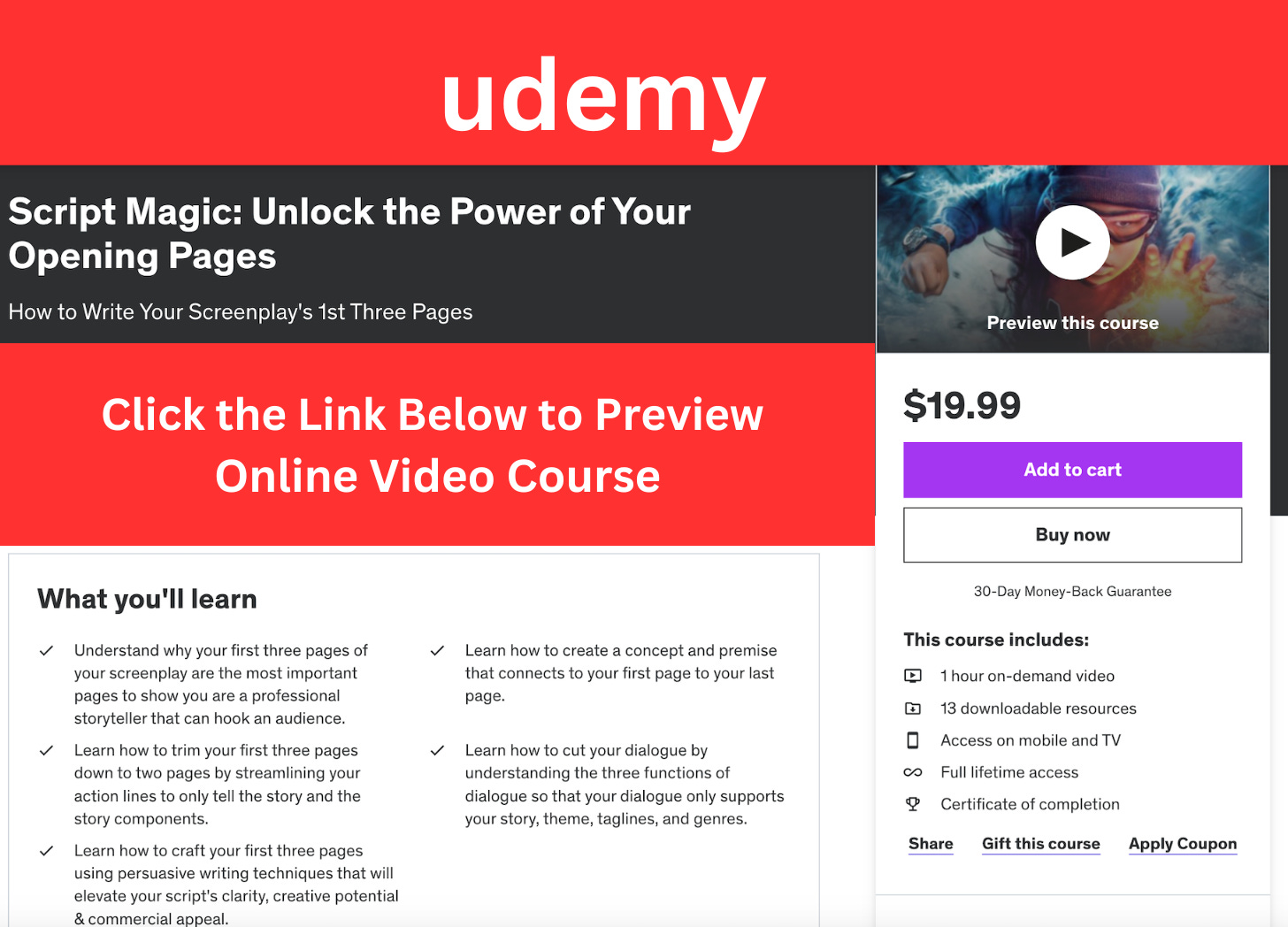Add METAL to your antagonist (villain or supervillain)… And make them shine.
Maneuver the antagonist's plans in the shadows.
Erase their bright future with a dark past.
Talk cheap. Tell lies. Torture with jokes.
Amid the moral truth, give them the best lines.
Love them like a new puppy.
Add METAL is the final installment in this series of articles that uses the elemental forces of nature to inspire and create powerful characters, antagonists, and conflict.
M: Maneuver the antagonist's plans in the shadows.
Example:
Victor, a cunning corporate mogul, orchestrates his schemes from behind the scenes, manipulating board members and rival companies without ever being directly implicated. His shadowy maneuvers keep him one step ahead of everyone else, especially your protagonist. This ensures Victor maintains his grip on power through secrecy and deception.
TIP: Remember Whoopi Goldberg as Oda May Brown in the film GHOST (1990) and Tony Goldwin as Carl Bruner, the best friend and corporate peer of Patrick Swayze's character, Sam Wheat. Both antagonistic characters operate in the “shadows.”
Writing Prompt:
Write a scene where your antagonist is subtly manipulating events from the background.
How do they ensure their involvement remains hidden?
What techniques or resources do they use to influence outcomes without direct action?
Show the impact of their shadowy maneuvers on the protagonist and the broader plot.
E: Erase their bright future with a dark past.
Example:
Once a promising scientist, Victor's career was derailed by a scandal involving unethical experiments. This dark past haunts him, fueling his current ruthless behavior and drive for revenge against those he believes wronged him.
TIP: Have you ever watched RAISING DION on Netflix? It's about Nicole, whose husband dies, and how she struggles to raise Dion, her young kid with superpowers. Jason Ritter plays Pat Rollins, an engineer at a biotech company called BIONA. Even though he's Dion's godfather, Pat is a fake ally who turns into an enemy with unethical scientific motivations.
Writing Prompt:
Create a backstory for your antagonist that explains their current actions.
How did a bright future turn dark?
What events or choices led them down this path?
Show how this past influences their motivations and actions in the present.
T: Talk cheap. Tell lies. Torture with jokes.
Example:
Victor delights in psychological manipulation, often using humor and charm to mask his deceit. On the other hand, he could flaunt it in plain sight. During a tense board meeting, he cracks seemingly harmless jokes that undercut his rivals' confidence while feeding them false information to lead them astray.
TIP: In Christopher Nolan's THE DARK KNIGHT series, the Joker comes to mind, especially Heath Ledger's version:
"I will make this pencil disappear."
"Tada. It's gone."
Writing Prompt
Write a scene where your antagonist uses humor and lies to achieve their goals.
How do they blend charm with deception?
What impact does their behavior have on those around them?
Show the protagonist or other characters struggling to see through the antagonist's façade.
A: Amid the moral truth, give them the best lines.
Example:
Victor delivers a chilling monologue in a pivotal confrontation that reveals his twisted logic and moral code. His eloquence and charisma make his arguments disturbingly compelling, even as the protagonist realizes the danger of his ideology.
TIP: In the film A FEW GOOD MEN (1992), written by Aaron Sorkin, Jack Nicholson as Colonel Nathan R. Jessep, USMC, played the best immortal scene with the singular line:
"You can't handle the truth."
Writing Prompt:
Craft a scene where your antagonist speaks with captivating eloquence, delivering the story's most memorable lines that reveal the thesis or antithesis in a way that tells the truth.
How do they use their words to sway opinions or reveal their philosophy?
Show the protagonist grappling with the unsettling truths in the antagonist's speech.
L: Love them like a new puppy.
Example:
Despite his criminal actions, Victor has a soft spot for his loyal assistant, treating her with surprising kindness and generosity. This unexpected affection humanizes him, making his character more complex and intriguing. Conversely, it allows for a weakness, a blind spot, and an opening your protagonist can ultimately extort to win the final battle.
TIP: JOHN WICK twists the puppy love motif, humanizing his badass protagonist character.

TIP 2: You can also use the love for puppies as a metaphor, like in the TV series BREAKING BAD, where Gus Fring is a villain with a complex personality. Despite his ruthless actions as a drug kingpin, Gus shows kindness and loyalty to his employees, particularly to his trusted assistant, Mike Ehrmantraut. Gus's affection for Mike humanizes him, revealing a side of his character that is not purely evil but grounded in a twisted sense of loyalty.
However, this affection is problematic; it’s a blind spot for Gus.
Walt (the protagonist) exploits this weakness by manipulating Mike and creating a situation where Gus's reliance on Mike leads to his downfall. Walt uses his knowledge of the relationship between Gus and Mike to orchestrate events that make Gus vulnerable, allowing Walt to win the final battle against him.
Writing Prompt:
Write a scene that showcases your antagonist's softer side.
Who or what do they care about deeply?
Write a scene where your protagonist identifies and exploits the antagonist's blind spot.
How does the protagonist discover this weakness?
What plan do they devise to turn the antagonist's affection for their trusted ally against them?
Show the tension and stakes as the protagonist navigates this delicate situation, leading to a climactic confrontation.
Conclusion
Incorporating the METAL techniques into every scene allows you to create multidimensional opponents whose personalities and actions shine with complexity and intrigue.
This creative approach ensures your antagonists, villains, and supervillains are not just obstacles for the protagonist but compelling characters who enrich the narrative and keep readers engaged.
Have a question about storytelling, structure, genre, or character development?
Hit reply and let me know. I will email you back!
Why subscribe?
Story Waves is a reader-supported publication. To receive new posts and support my work, consider becoming a free or paid subscriber.
Udemy: Click to Preview the Online Video Course.
Subscribe to Story Waves!
Access screenwriting and storytelling lessons.
Get the discounted $79 ANNUAL subscription or $8/month to receive:
Growing Archive of all Story Wave posts, writing workshops, teaching videos, downloadable class notes, and templates
Join Story Waves Writing Challenges
Story Waves Community of writing support and paid posts
Get the discounted $159 FULL ACCESS subscription to receive:
Access to STORY GROUP and work with me every first Sunday of the month, 2-3:30 pm EST, where I demo page rewrites live from volunteers and teach from my Story Waves lessons.
Receive a $100 discount on all Story Consultations.
p.s. Replays will be available for workshops. Watch them at your convenience.
✨ Invest in yourself and your Story! Commit to one year with my guidance and get the discounted annual subscription. You, your writing, and your career are worth it.
Thank you for supporting Story Waves! Consider becoming a paid subscriber and get the benefits of Story Group and Story Consultation discounts. See FULL ACCESS.
Subscribed
I look forward to reading your stories and connecting in 2024!
Best wishes,
Kelly E. Keough










